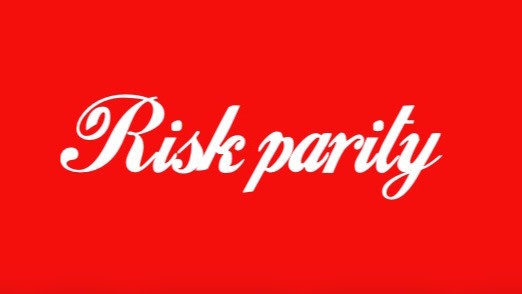Unlock the Editor’s Digest for free
Roula Khalaf, Editor of the FT, selects her favourite stories in this weekly newsletter.
Bridgewater and State Street have just announced a “strategic relationship” to “widen access to core alternative investment strategies”. What does this actually mean? Well, it means a risk parity ETF!
Look at what just landed in the SEC’s filing cabinet:
“All Weather” is Bridgewater’s main risk parity strategy, and is a bit more passive than its flagship “Pure Alpha” macro strategy. In risk parity, a type of investing pioneered by Ray Dalio, an investor holds a broad array of asset classes — typically stocks, bonds, commodities — and uses leverage to ensure that they all have the same weighting by volatility, rather than by nominal dollars.
The idea is the investor will have a truly diversified portfolio that should do at least OK in almost any market environment. Here’s a (very) basic explainer from some mainFT chump.
Its success is one of the main things that made Bridgewater the world’s biggest hedge fund group, and the approach has been mimicked by many funds, including some ETFs. Results have lately been more muddled, but it remains a pillar allocation at many pension plans.
State Street Global Advisors, the Boston bank’s asset management arm, will formally be the ETF’s investment adviser, and Bridgewater the sub-adviser. Here’s how it will work:
Bridgewater provides a daily model portfolio to SSGA FM based on Bridgewater’s proprietary All Weather asset allocation approach. The model portfolio is specific to the Fund. Based on Bridgewater’s investment recommendations, SSGA FM purchases and sells securities and/or instruments for the Fund. SSGA FM seeks to implement Bridgewater’s investment recommendations, but may change the Fund’s investment allocation at any time.
Bridgewater’s proprietary strategy is an approach to strategic asset allocation that is designed with the goal of generating consistent returns across different economic environments. Bridgewater believes that asset classes have different structural sensitivities to economic conditions that can be logically understood because they are rooted in the characteristics of the asset’s cash flows, and that this understanding can be used to structure a portfolio that is diversified to what Bridgewater believes are the most important fundamental macro drivers of asset returns: growth and inflation.
For example, allocating to assets that Bridgewater believes will likely outperform in rising growth (e.g., equities and commodities) alongside assets it believes will likely outperform in falling growth (e.g., fixed-rate and inflation-linked government debt) can create a portfolio that collects the market risk premium with no fundamental sensitivity to growth conditions. Similarly, allocating to assets that Bridgewater believes will likely outperform in rising inflation (e.g., commodities and inflation-linked debt) alongside assets it believes will likely outperform in low or stable inflation (e.g., fixed-rate government debt and equities) can create a portfolio that collects the market risk premium with no fundamental sensitivity to inflation. Bridgewater refers to this approach to portfolio diversification as “environmental balance”.
In making its investment recommendations to the Fund, Bridgewater will use its proprietary estimates of growth and inflation sensitivity by asset class to specify positions that, in aggregate, create a portfolio that Bridgewater believes has no bias to outperform or underperform based on either growth or-inflation conditions, with the goal of enabling the Fund to achieve its investment objective across a wide range of economic environments.
Bridgewater does not vary the weights of investments in the model portfolio based on any tactical view of how particular investments will perform, but rather attempts to balance the risk of the model portfolio based on its understanding of the relationship between asset classes and economic environments. Bridgewater may, however, vary the allocations across and within asset classes based on its assessment of market conditions and evolutions in its understanding of how to best achieve balance to growth and inflation. The model portfolio typically targets an annualized volatility level for the portfolio ranging between 10%-12%. Volatility is a statistical measurement of dispersion of returns of a security, fund or index as measured by the annualized standard deviation of its returns. Higher volatility generally indicates higher risk. Actual or realized volatility can and may differ from the target volatility range described above. The actual or realized volatility level for longer or shorter periods may be materially higher or lower depending on market conditions.
Will it work? To be honest, it makes a lot of sense for Bridgewater and State Street to do this.
State Street is clearly hot for the idea of shoving alternative investments into ETFs, and risk parity is actually reasonably well suited for the wrapper, since you can do it transparently and passively.
It’s not the greatest moment to try to sell risk parity (many have performed badly for a while now), but this has the benefit of selling “original Coke” rather than some overpriced, underpowered knock-off. Bridgewater was probably too snooty to even contemplate it before, but given its ongoing woes it’s a natural step for the investment group.
We’ll dig more thoroughly into the prospectus this evening, but if you have any thoughts, observations or questions then bung them in the comment box below please.
https://www.ft.com/content/fe76946b-a5fc-4f1b-854f-240757835bdd


